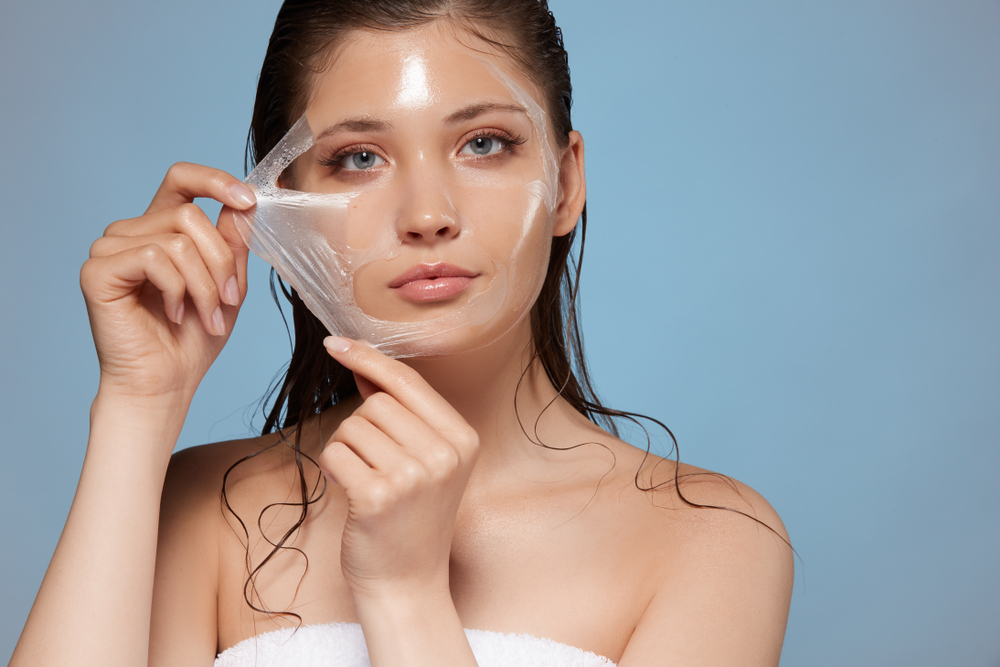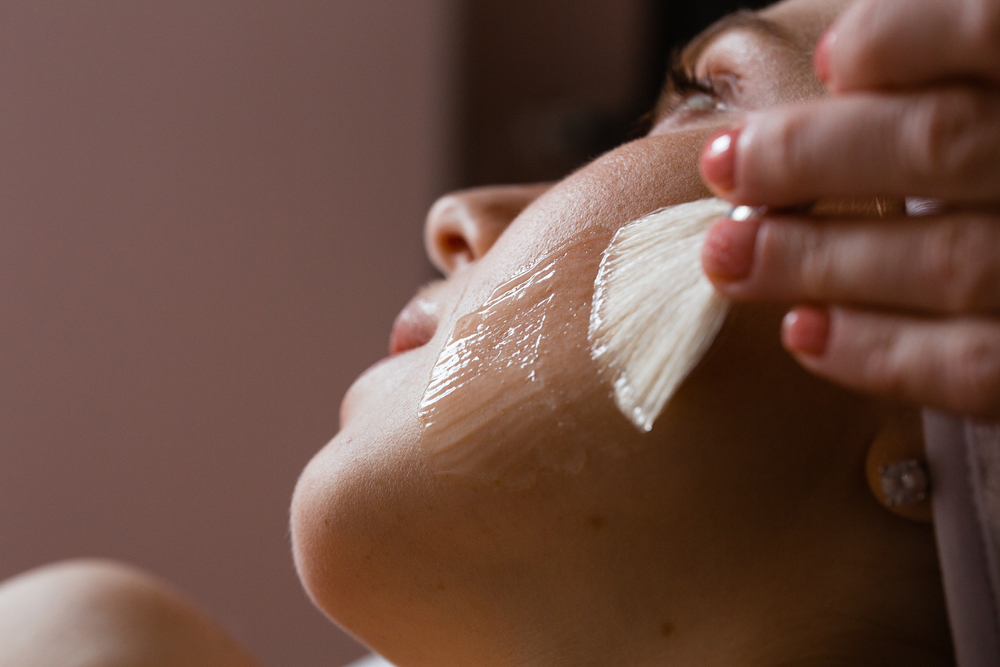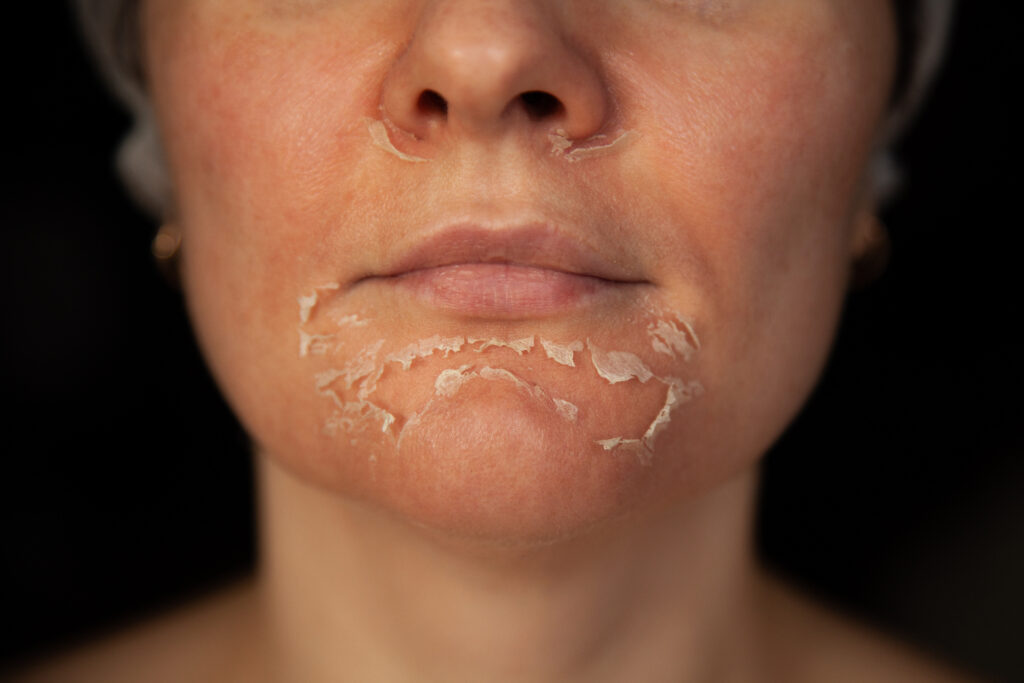If you’ve been wondering, “how many chemical peels do I need for hyperpigmentation,” you’re not alone. Many patients with uneven skin tone, acne scars, or sun spots want a clearer, more radiant complexion. Experts at The Naderi Center offer chemical peel treatments to help address various skin concerns and restore youthful skin. Chemical peels work by exfoliating dead skin cells, improving skin texture, and minimizing discoloration caused by sun damage or acne. From light peels to deeper options, there’s a type of peel suited to different skin types and concerns.
The specialists at The Naderi Center focus on delivering optimal results through individualized treatment plans. They combine extensive medical expertise with a personalized approach to ensure each patient’s needs are met. This blog will help you understand what chemical peels do for hyperpigmentation, what determines the number of treatments you might need, and how to maintain the benefits of chemical peels for a long-lasting radiant skin appearance. Call our office today at 703-481-0002 to schedule your consultation and discover how the specialists at The Naderi Center can help you achieve a healthier, more youthful complexion.

5 Key Points to Remember
- Chemical peels can help reduce stubborn hyperpigmentation and uneven skin tone by removing damaged skin layers.
- The number of treatments needed varies based on your skin condition, the type of peel, and how severe your hyperpigmentation is.
- Light peels can offer gradual improvements and can be done on most patients, while medium peels and deep peels address more severe skin issues like acne scars and deep wrinkles but cannot be performed on all skin colors.
- Treatment frequency and proper sun protection are crucial to seeing and maintaining optimal results.
- Consulting with an experienced provider like the specialists at The Naderi Center helps you get a personalized treatment plan for your individual needs.
What Chemical Peels Do for Hyperpigmentation
Chemical peels are a type of facial treatment designed to improve various skin concerns, including hyperpigmentation, skin discoloration, dull and coarse skin texture and fine lines. These peels involve applying a chemical solution that exfoliates the top layer of the skin. Once the damaged skin peels away, newer, healthier skin cells emerge to create a more even complexion. By accelerating the turnover of dead skin cells, chemical peels can reduce the appearance of acne scars, wrinkles, sun damage, and other age related skin conditions.
If you’ve noticed dark patches or spots due to factors like sun exposure or acne breakouts, chemical peels can lighten those areas and improve your overall skin tone. This process can transform your dull skin to radiant skin by revealing smoother, fresher skin layers. For people struggling with stubborn hyperpigmentation, chemical peels offer a promising solution that’s often easier to manage than more invasive procedures. However patient selection is key and not all patients are good candidates for the stronger peels.
Factors That Affect the Number of Chemical Peels Needed
Type and Severity of Hyperpigmentation
Hyperpigmentation varies from mild spots that respond well to light chemical peel treatments, to severe cases that may require multiple medium peels or a deep chemical peel. The bigger or darker the patches, the more treatments you might need. For example, mild hyperpigmentation may begin to improve after just one or two sessions, while more significant conditions could require several sessions to achieve optimal results. However you have to be cautious as some conditions like Melasma may get worse with some forms of peels.
Skin Type and Sensitivity
Different skin types react differently to peels. People with highly sensitive skin or conditions like rosacea may experience more irritation or skin sensitivity, requiring gentler mild peels or fewer sessions with a longer healing time. On the other hand, those with thicker or less sensitive skin might benefit from stronger peels done at shorter intervals.
Strength and Type of Chemical Peel
What kind of chemical peel is best for hyperpigmentation? This depends on factors like the severity of your discoloration and your overall skin condition.
- Light Chemical Peels: Use mild acids like alpha hydroxy acids (AHAs) or beta hydroxy acids (BHAs). Suitable for mild to moderate hyperpigmentation or for regular skincare maintenance.
- Medium Peels: Often contain trichloroacetic acid (TCA) in stronger concentrations. Medium peels go deeper than light peels and can address more persistent pigmentation, acne scars, and uneven skin tone.
- Deep Chemical Peels: Use Baker-Gordon solution, Hetter’s solution, or phenol. Ideal for severe skin issues, deep wrinkles, and stubborn discoloration. This peel often requires general anesthesia and a longer recovery period.
Treatment Frequency and Healing Time
Some patients prefer to space out multiple treatments to minimize downtime and skin irritation. Depending on the intensity of the peel, you might need to wait anywhere from several weeks to months between sessions. This ensures your skin has time to heal and regenerate. Following each peel, it’s vital to practice proper sun protection and use recommended skincare products to help maintain your results. Staying out of the sun is absolutely a must otherwise you can create PIH (Post Inflammatory Hyperpigmentation).
Your expert provider may recommend a specific type of peel based on your skin’s needs and your desired results. Specialists at The Naderi Center will evaluate your complexion to determine the best course of action and number of treatments.

Secure Your Safe Treatment Experience with The Naderi Center
Join our satisfied clients who’ve experienced safe, effective treatments.
Common Types of Chemical Peels for Hyperpigmentation
Superficial Peels and Their Effects
Superficial or light peels typically use mild acids to target the topmost layer of the skin. They are a great choice for addressing minor sun spots, improving dull skin texture, and treating mild forms of hyperpigmentation. Because they only affect the outer layer, they offer quicker recovery periods, making them popular for first-time peel clients. You can often see a subtle improvement right after your first light chemical peel, although multiple sessions may be needed for more pronounced changes. VI Peel is one of the best examples of this type of peel.


Medium-Depth Peels for Stubborn Pigmentation
Medium peels penetrate deeper into the skin and are often recommended for tackling tougher cases of hyperpigmentation, such as acne scars, deeper wrinkles, and uneven pigmentation. These peels may cause more visible peeling and require about a week or two of recovery. Patients often find that they need fewer sessions compared to superficial peels, thanks to the stronger exfoliation properties. Medium peels can drastically improve your complexion by helping smooth scars and reduce dark spots, giving you radiant skin.
Deep Peels and When They Are Recommended
Deep chemical peels remove multiple layers of damaged skin. They’re most commonly recommended for people with severe advanced aging skin conditions or deeper scars. Phenol peels, for example, can produce dramatic results for people with advanced signs of aging or severely damaged skin. However, deep peels also carry longer recovery times and more significant risks and complications. General anesthesia is often used, and you’ll need to follow strict aftercare instructions to reduce the risk of complications. Deep peels are usually a one-time treatment or they’re performed very rarely, rather than as a series of many treatments.

How Long Does It Take to See Results From Chemical Peels?
Improvements often become noticeable once the top layer of peeling is complete and the new skin cells have surfaced. In general, light peels produce initial results within a week, while medium peels could take one to two weeks for optimal healing. Deep peels require more extensive downtime, sometimes several weeks to months, before you see the final outcome.
The most important factor is consistency—patients who stick to their recommended treatment plan usually get the best results. Over time, your skin can appear brighter, smoother, and more even-toned. Proper aftercare, including sun protection, helps maintain these benefits and prevents new hyperpigmentation.
Who Should and Shouldn’t Get Chemical Peels for Hyperpigmentation?
Chemical peels generally suit people looking to address various skin concerns such as acne scars, sun damage, uneven skin tone, and moderate wrinkles. However, certain skin conditions or severe skin issues might require different approaches. Individuals with active infections, highly sensitive skin, or a history of allergic reactions to peel solutions may not be ideal candidates. If you have severe active acne or are currently using strong skincare products like retinol or prescription medications, you may need to pause use before a peel.
A consultation with a board-certified expert is crucial. The specialists at The Naderi Center will review your medical history, assess your skin’s condition, and determine whether a chemical peel is right for you. If chemical peels aren’t recommended, they may suggest alternatives such as laser treatment, laser hair removal (if excess hair is also a concern), or other facial treatment options. Hispanic, Asian, Middle Eastern, Indian and African patients are not safe candidates for medium to deeper peels.
Tips to Improve and Maintain Results
After each chemical peel session, following the right skincare routine is vital. You can experience dryness and flaking as part of the peeling process. Here’s how to make the most of your investment:
- Hydration: Use gentle, hydrating skincare products to soothe and moisturize newly revealed skin.
- Sun Protection: After the skin can healed, apply a broad-spectrum sunscreen daily to shield your fresh skin from sun exposure. Avoiding harsh sun rays reduces the risk of additional sun spots and maintains your radiant complexion.
- Gentle Care: Refrain from picking at any peeling skin. This prevents scarring and irritation.
- Follow-Up Treatments: Keep up with your treatment plan, whether it’s a series of mild peels or one deep chemical peel, as recommended by your provider.
- Lifestyle Adjustments: Limit smoking and excessive sun exposure, as both can accelerate skin aging and discoloration.
With the right at-home care and professional guidance, chemical peels can significantly enhance your overall skin tone and tackle stubborn hyperpigmentation. Schedule a consultation with the specialists at The Naderi Center today to create a personalized plan that addresses your specific goals and skin type.
FAQs About Chemical Peels and Hyperpigmentation
For the safest and most effective treatment, it’s best to consult with a qualified medical professional or a certified esthetician who operates under a doctor’s guidance. Dr. Naderi’s extensive training ensures he can recommend the appropriate peel strength and technique for your unique skin concerns, reducing the risk of complications.
While chemical peels can significantly reduce the appearance of hyperpigmentation, the final result depends on factors like the severity of your condition, how your skin heals, and proper aftercare. In many cases, you’ll see a dramatic improvement, but complete elimination of all discoloration is not guaranteed.
When performed by experienced professionals, chemical peels are unlikely to worsen hyperpigmentation. However, using the wrong type of peel or failing to protect your skin from sun exposure afterward can lead to irritation or uneven results. That’s why it’s crucial to choose a reputable provider like Dr. Naderi, who will tailor your treatment plan for your specific needs.
Your number of treatments will depend on the severity of your pigmentation, skin sensitivity, and the type of peel chosen. A consultation with Dr. Naderi can provide a clear roadmap. Some people see results with just one or two light peels, while others need a series of medium or even deep peels to address severe skin conditions.
Your waiting period typically ranges from one to four weeks, depending on the peel’s strength and how well your skin recovers. Light peels may be done more frequently, while deeper peels require a longer interval for the skin to heal properly.